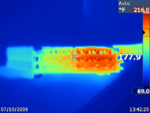Mike leroy
Active Member
A doctor takes your temperature to judge your health. Thermal images taken from a cellphone are like thermometers in homes, cars or a doctor's office. Judge motor power, battery capacity and brake size that best matches your particular environment and purposes from thermal images. Like Goldilocks said, "this one is much too hot, this one is too cold, but this one is just right".
A heart rate monitor can control the Impulse 2 bike motor on a Kahlkoff eBike. Your pulse rate and motor RPM can be surprisingly similar! The bike computer pulses battery power to the motor, rather than blood. Equating motor temperature with your heart rate should give you some idea of how hard to push the bike motor. The primary concept is a thermal image is color-coded for temperature to indicate the electrical effort.
The automobile industry has a long-standing history of using "Star Plots" to visually diagram differences between cars. Suppose we rate aspects of a bike ride on a scale from 1 to 5. We can also include personal information, i.e., our Heart Rate.
Star plots diagram the "big picture" or holistic viewpoint. We use bike "Heat" or temperature from the thermal image to judge the outcome of all the combined factors of the ride.
The following Star Plot illustrates a typical ride. All bike considerations are rated a "3", on a scale from 1 to 5. We also score our personal information , i.e., Heart Rate, as a "3", or average.
The following Star Plot tries to convey an under-powered bike because the outcome, Heat, has the highest score of "5". The bike was overheated.
If we scored Heat as too cold, "1", for another bike, then that motor is over-powered. The potential power was never utilized, so we overpaid for the bike.
To evaluate the bike from a holistic viewpoint, we considered the outside temperature, bike speed, additional weight, steepness, etc.... You can compare anything relevant to your particular situation.
(Link Removed - No Longer Exists)
As you may have gathered, you could rely on your sense of touch to estimate temperature, on a scale from 1 to 5. A thermal image is exact. Certain motors have a tendency to overheat suddenly. In this case, thermal images are necessary. You will need a thermometer to calibrate your sense of touch with 140F, the optimal temperature.
Matthew McConaughey epitomizes my feelings in a YouTube car commercial.
Optimize and protect the bike electrical system from damage. Collaborate with riders in your www.NextDoor.com neighborhood to gradually increase electrical demands, until a particular eBike reaches the point of diminishing returns. In other words, the situation when an eBike is too hot -- can be CALIBRATED by all riders in a neighborhood. eBikes that remain too cold are overkill. A major reason for heat is the copper wires both inside the motor and connecting to the battery through the computer. Relate copper wires to veins in the human body.
My goal is to carry 50 pounds of food from the store. I might add ten pounds on each trip until I find the heat limit. I might need to add air pressure at the gas station on the return trip, due to a 30% increase in total weight. Asking a Nextdoor.com neighbor resolves uncertainty, doubt and hassle. Finding the best set of tradeoffs has costs in terms of "time and materials".
I started a www.NextDoor.com group called "Neighborhood Electric Vehicles". The NEV group aim is to collect local requirements and limits for a very specific area. A star plot is a good way to visualize tradeoffs. I believe my Nextdoor.com neighborhood is about a one mile radius.
Tools like this make great products go "viral" on the Internet. In other words, an early adopter struggles to customize a solution that genuinely improves his/her circumstances. Neighbors take notice and follow suit. Sometimes the stumbling block to gathering "critical mass" is the "chicken-or-egg" dilemma.
What pattern becomes apparent in the following map? Did you notice statistical "clustering"(i.e., two or more green parcel lots)? Clustering is the result of adjacent neighbors cooperating. Isolation (i.e., large pink gaps) is the opposite of clustering. The map leaves no doubt concerning the neighbors on the same [web] page!
A local expert must establish a viable, enduring solution for a particular purpose. A bike owner is perceived with more credibility than a dealer. Otherwise, you exit the market like Best Buy due to a 30% product return rate. A "shotgun" approach is probably less appropriate than a "rifle". EBikes are very powerful, special purpose tools that seem to reflect the rider's personality.
The speed of information flow is astounding. I smelled cigar smoke coming from the bushes in a park at 8am. Within one hour, a house across the street was robbed. By the end of the day, I was able to make the connection about the lurking thief using NextDoor.com.
Most people are struck by the higher eBikes speed. Fewer people realize an electric motor powers the faster bike. Posting questions to neighbors resolves the mystery in a less daunting and more hospitable manner.
The beach tires were the conspicuous difference I noticed on the first eBike I encountered. I asked the owner about the tires, oblivious to the battery and motor. The big impression the bike left on me was how effortlessly the eBike passed by all the traditional bikes. I know he would let me try his bike, which I greatly prefer over going to a retail shop.
(Link Removed - No Longer Exists)
A FLIR thermal lens attached to your cell phone camera depicts "waste heat". Waste heat is energy taken from the battery that does not add power to the wheels. Waste heat indicates whether the eBike matches your needs.
A laser thermometer is less expensive and a more special purpose device. Mounting the laser on your handlebars provides realtime temperature of controller, brakes, battery or motor, just like the dashboard in a car.
(Link Removed - No Longer Exists)
For example, the eBike in the above picture, has a glowing hotspot, centered around the rear axle.

Contrast the eBike picture with the bicycle and motorcycle pictures. Please note the wheel colors are a mirror image of each other. The bicycle hub is colored like the tire. You may notice the purple bicycle water bottle is close to room temperature.
Motorcycles and bicycles have stood the test of time.
(Link Removed - No Longer Exists)
You could simply take thermal images of demo or rental ebikes to determine most appropriate for your situation. Please see the attached example map for an idea how to test bikes in a systematic manner, based on science. The idea is to take thermal images at specific energy consumption levels to compare bikes in an unbiased and meaningful manner. The basis for comparison is:
http://www.rohloff.de
(Link Removed - No Longer Exists)
My guess is bicycles and ebikes are designed to 30mph standards, because it corresponds with USA tire standards. Downhill coasting speed for a 5% grade is 30mph. General standards may not apply to your specific situation. For example, the 5% grade is the lowest standard in the above table. My guess is eBikes provide the greatest hill-climbing benefit on hills between 5% and 10% grade.
Olympic ski jumps are about 80% grade. A USA flight of stairs is generally about a 65% grade. The maximum USA wheelchair ramp legal limit is 8%, which is the angle cars start to bottom out. An 8% grade takes eight times more physical energy than a flat surface.
My neighborhood is best represented by the 10% to 20% grade cases. From my experience and calculations, a 10% grade is the borderline when running/walking is the no slower than pedaling a bike. In fact, I usually outrun the few serious cyclists who attempt the hills in my neighborhood. Since the geology is an extinct volcano, an 18% grade falls in my primary route.
Bicycles are demystified when one realizes bicycles are gyroscopes. Bicycle "wobble speed" is 9mph, and is my minimum uphill speed requirement. Below 2.5mph a bicycle cannot balance and topples over like a spinning top. Bikers characteristically stand up and exaggerate lateral movements at wobble speed, with each turn of the crank arm, in an unrhythmic cadence. Like Palm trees swaying in wind gusts. A great deal of precious energy is lost in lateral movements by pushing full body weight down upon the pedals. Riders are often distracted with balancing the bike.
Runners can generate higher RPMs and direct all leg/foot power vertically up the hill. I train with an iPod metronome set to 80-100 beats/minute. A runner's lowest gear lies in his ankles, by fully extending the foot. Pedestrians gawk, smile, or chuckle when they see me catch and pass a bicyclist. Today, I raced a woman up a 7% grade. I started from a stop, while she was pedalling at about 5 mph. I blasted past her at 9 mph. She lagged far behind at the top. We both had a good laugh and exchanged comradeship by high-fiving.
Runners have an advantage over bicyclists above 15% grade, but comparisons are hard to draw. I have often beat bicyclists by several minutes up to skyline on the Archery Fire Trail in a huddart park. The comparison is indirect, because they must climb the hairpins on a kings mountain road. Kings mountain road is deadly and I do not even drive on it. I have seen over 100 near-miss collisions or accidents between bicyclists, deer and vehicles. A hike down into the steep gulches reveals all sorts of frightening accidents.
eBikes have a golden opportunity to shine above 10% grades, traveling above wobble speed (9mph). However, this steepness requires some tweaking with gear ratios and wheel size. Twenty-four to twenty-six inch wheels facilitate hill-climbing. A 400% gear ratio should suffice. A 300% gear ratio is typical for many bicycles. Higher gear ratios push bikes into more traditional vehicle gearbox territory, oil-filled integrated rear hubs.
The sweet spot, in terms of cost-to-benefit ratio, is traveling above wobble speed in 5% to 15% grades. A 15% grade is 15 times more effort than the same effort on flat ground.
My rule-of-thumb is 5NM per grade percent. In other words, 70NM may travel at wobble speed(10mph) on a 12% grade for 275 total weight, as a very general estimate.
Are weight-sensing racks missing from the controllers torque equation? Without the ability to tweak climbing features, a general purpose eBike provides little or no benefit. Gravity is unfriendly towards additional loads, e.g., carrying 50 pounds of groceries. My goal is to replace my car with an eBike. As hard as I try, 50 pounds on a 10% grade forces me to keep my car, which I rarely drive. I can comfortably walk with 35 pounds or run with 10 pounds in an expensive, Mountain Smith fanny pack.
I understand some eBikes have acceleramoter or altimeters to sense incline angle. I am sure motor RPMs can be controlled to deliver higher torque by adding another sensor(s). More power in Watts may be unnecessary. Watts = Torque x RPM. Alternatively, Torque = Watts / RPM. The bike controller algorithm only needs to slow the motor down when climbing uphill with heavy loads.
In other words, a software update could provide customized torque settings.
The controller is like your cellphone. Be sure your controller can be updated. Bosch supports upgrades via the USB port from a retailer. How you upgrade an Internet purchase is unclear to me.
Much less expensive and faster than renting bikes is to ask other people to ride the route on the map. The most important action is to give your friend a FLIR lens for their cellphone. If they take thermal pictures at all the places indicated on the map, you can easily and fairly compare different bikes.
(Link Removed - No Longer Exists)
BTW - if you follow this route, it will take you to beautiful Stulsaft park. Take the "Silverhill Mountain Lion" park warnings seriously. I came across a deer kill and SML tracks in the mud around Christmas. A deer was killed in a backyard in the past two weeks. I see at least a dozen deer each week. Many mountain lions live in this area. San Mateo county posts sightings on a regular basis for mountain lions.
I want an eBike for transportation first and recreation secondly. I run two miles to my local store for groceries and carry 10-35 pounds of food back. I need hill climbing power, which seriously overheats motors carrying loads, in 10-20% grades. More importantly, I need great brakes, because downhill coasting speed exceeds the 35mph speed limit. My estimates indicate 90NM of torque.
Racks that can support 50 pounds is still an unresolved issue. Racks that attach to seat posts have much lower weight limits. The most appropriate racks may need to be built into the frame. Ideally, I would like to distribute the weight evenly on both wheels. I do not know if this is possible with a full suspension mountain bike..
I am going to draw the line at 48V systems. I need 750 to 1kW. I have not found an appropriate solution from the major bike manufacturers. I plan to buy a new mountain bike and install an 8Fun/Bafang BBS02 750W drive.
The HPC Supermundo may be a great choice! Based on Urban Commuter M-Drive designed for the HPC Supermondo, Yuba Mundo, Xtracycle Edgerunner, and Surly Big Dummy.
I am reluctant to do so because there is no cost savings. I also prefer buying from a company that will service the bike over the next five years. I will try to pedal without a motor to a store further away, with gentler hills. I can run up a 7% grade above ten mph. I have no idea how running translates to biking. I will give training a few months, perhaps I can manage without a motor by tweaking the gear ratios.
In case of emergency or inconvenience, the bus bike rack is my fallback. So, the frame must be diamond shaped. I favor a mountain bike for safety reasons. The Schwable ProCore tire tubes have two air chambers, which gives better emergency control. The additional weight increases the risk of a flat tire. The ProCore system basically consists of two inner tubes. The YouTube video shows racers running the tires flat.
(Link Removed - No Longer Exists)
I can wait another year, because I am a runner, not a cyclist. I am encouraged by the rapid advances.
The BMW Evolution C electric scooter is a better option for me now, but BMW North America is not importing them.
A thermal image may answer some of the following questions concerning energy efficiency and safety:
Mike
.
A heart rate monitor can control the Impulse 2 bike motor on a Kahlkoff eBike. Your pulse rate and motor RPM can be surprisingly similar! The bike computer pulses battery power to the motor, rather than blood. Equating motor temperature with your heart rate should give you some idea of how hard to push the bike motor. The primary concept is a thermal image is color-coded for temperature to indicate the electrical effort.
The automobile industry has a long-standing history of using "Star Plots" to visually diagram differences between cars. Suppose we rate aspects of a bike ride on a scale from 1 to 5. We can also include personal information, i.e., our Heart Rate.
Star plots diagram the "big picture" or holistic viewpoint. We use bike "Heat" or temperature from the thermal image to judge the outcome of all the combined factors of the ride.
The following Star Plot illustrates a typical ride. All bike considerations are rated a "3", on a scale from 1 to 5. We also score our personal information , i.e., Heart Rate, as a "3", or average.
The following Star Plot tries to convey an under-powered bike because the outcome, Heat, has the highest score of "5". The bike was overheated.
If we scored Heat as too cold, "1", for another bike, then that motor is over-powered. The potential power was never utilized, so we overpaid for the bike.
To evaluate the bike from a holistic viewpoint, we considered the outside temperature, bike speed, additional weight, steepness, etc.... You can compare anything relevant to your particular situation.
(Link Removed - No Longer Exists)
As you may have gathered, you could rely on your sense of touch to estimate temperature, on a scale from 1 to 5. A thermal image is exact. Certain motors have a tendency to overheat suddenly. In this case, thermal images are necessary. You will need a thermometer to calibrate your sense of touch with 140F, the optimal temperature.
Matthew McConaughey epitomizes my feelings in a YouTube car commercial.
Optimize and protect the bike electrical system from damage. Collaborate with riders in your www.NextDoor.com neighborhood to gradually increase electrical demands, until a particular eBike reaches the point of diminishing returns. In other words, the situation when an eBike is too hot -- can be CALIBRATED by all riders in a neighborhood. eBikes that remain too cold are overkill. A major reason for heat is the copper wires both inside the motor and connecting to the battery through the computer. Relate copper wires to veins in the human body.
My goal is to carry 50 pounds of food from the store. I might add ten pounds on each trip until I find the heat limit. I might need to add air pressure at the gas station on the return trip, due to a 30% increase in total weight. Asking a Nextdoor.com neighbor resolves uncertainty, doubt and hassle. Finding the best set of tradeoffs has costs in terms of "time and materials".
I started a www.NextDoor.com group called "Neighborhood Electric Vehicles". The NEV group aim is to collect local requirements and limits for a very specific area. A star plot is a good way to visualize tradeoffs. I believe my Nextdoor.com neighborhood is about a one mile radius.
Tools like this make great products go "viral" on the Internet. In other words, an early adopter struggles to customize a solution that genuinely improves his/her circumstances. Neighbors take notice and follow suit. Sometimes the stumbling block to gathering "critical mass" is the "chicken-or-egg" dilemma.
What pattern becomes apparent in the following map? Did you notice statistical "clustering"(i.e., two or more green parcel lots)? Clustering is the result of adjacent neighbors cooperating. Isolation (i.e., large pink gaps) is the opposite of clustering. The map leaves no doubt concerning the neighbors on the same [web] page!
A local expert must establish a viable, enduring solution for a particular purpose. A bike owner is perceived with more credibility than a dealer. Otherwise, you exit the market like Best Buy due to a 30% product return rate. A "shotgun" approach is probably less appropriate than a "rifle". EBikes are very powerful, special purpose tools that seem to reflect the rider's personality.
The speed of information flow is astounding. I smelled cigar smoke coming from the bushes in a park at 8am. Within one hour, a house across the street was robbed. By the end of the day, I was able to make the connection about the lurking thief using NextDoor.com.
Most people are struck by the higher eBikes speed. Fewer people realize an electric motor powers the faster bike. Posting questions to neighbors resolves the mystery in a less daunting and more hospitable manner.
The beach tires were the conspicuous difference I noticed on the first eBike I encountered. I asked the owner about the tires, oblivious to the battery and motor. The big impression the bike left on me was how effortlessly the eBike passed by all the traditional bikes. I know he would let me try his bike, which I greatly prefer over going to a retail shop.
(Link Removed - No Longer Exists)
A FLIR thermal lens attached to your cell phone camera depicts "waste heat". Waste heat is energy taken from the battery that does not add power to the wheels. Waste heat indicates whether the eBike matches your needs.
A laser thermometer is less expensive and a more special purpose device. Mounting the laser on your handlebars provides realtime temperature of controller, brakes, battery or motor, just like the dashboard in a car.
(Link Removed - No Longer Exists)
For example, the eBike in the above picture, has a glowing hotspot, centered around the rear axle.
Contrast the eBike picture with the bicycle and motorcycle pictures. Please note the wheel colors are a mirror image of each other. The bicycle hub is colored like the tire. You may notice the purple bicycle water bottle is close to room temperature.
Motorcycles and bicycles have stood the test of time.
(Link Removed - No Longer Exists)
You could simply take thermal images of demo or rental ebikes to determine most appropriate for your situation. Please see the attached example map for an idea how to test bikes in a systematic manner, based on science. The idea is to take thermal images at specific energy consumption levels to compare bikes in an unbiased and meaningful manner. The basis for comparison is:
http://www.rohloff.de
(Link Removed - No Longer Exists)
My guess is bicycles and ebikes are designed to 30mph standards, because it corresponds with USA tire standards. Downhill coasting speed for a 5% grade is 30mph. General standards may not apply to your specific situation. For example, the 5% grade is the lowest standard in the above table. My guess is eBikes provide the greatest hill-climbing benefit on hills between 5% and 10% grade.
Olympic ski jumps are about 80% grade. A USA flight of stairs is generally about a 65% grade. The maximum USA wheelchair ramp legal limit is 8%, which is the angle cars start to bottom out. An 8% grade takes eight times more physical energy than a flat surface.
My neighborhood is best represented by the 10% to 20% grade cases. From my experience and calculations, a 10% grade is the borderline when running/walking is the no slower than pedaling a bike. In fact, I usually outrun the few serious cyclists who attempt the hills in my neighborhood. Since the geology is an extinct volcano, an 18% grade falls in my primary route.
Bicycles are demystified when one realizes bicycles are gyroscopes. Bicycle "wobble speed" is 9mph, and is my minimum uphill speed requirement. Below 2.5mph a bicycle cannot balance and topples over like a spinning top. Bikers characteristically stand up and exaggerate lateral movements at wobble speed, with each turn of the crank arm, in an unrhythmic cadence. Like Palm trees swaying in wind gusts. A great deal of precious energy is lost in lateral movements by pushing full body weight down upon the pedals. Riders are often distracted with balancing the bike.
Runners can generate higher RPMs and direct all leg/foot power vertically up the hill. I train with an iPod metronome set to 80-100 beats/minute. A runner's lowest gear lies in his ankles, by fully extending the foot. Pedestrians gawk, smile, or chuckle when they see me catch and pass a bicyclist. Today, I raced a woman up a 7% grade. I started from a stop, while she was pedalling at about 5 mph. I blasted past her at 9 mph. She lagged far behind at the top. We both had a good laugh and exchanged comradeship by high-fiving.
Runners have an advantage over bicyclists above 15% grade, but comparisons are hard to draw. I have often beat bicyclists by several minutes up to skyline on the Archery Fire Trail in a huddart park. The comparison is indirect, because they must climb the hairpins on a kings mountain road. Kings mountain road is deadly and I do not even drive on it. I have seen over 100 near-miss collisions or accidents between bicyclists, deer and vehicles. A hike down into the steep gulches reveals all sorts of frightening accidents.
eBikes have a golden opportunity to shine above 10% grades, traveling above wobble speed (9mph). However, this steepness requires some tweaking with gear ratios and wheel size. Twenty-four to twenty-six inch wheels facilitate hill-climbing. A 400% gear ratio should suffice. A 300% gear ratio is typical for many bicycles. Higher gear ratios push bikes into more traditional vehicle gearbox territory, oil-filled integrated rear hubs.
The sweet spot, in terms of cost-to-benefit ratio, is traveling above wobble speed in 5% to 15% grades. A 15% grade is 15 times more effort than the same effort on flat ground.
My rule-of-thumb is 5NM per grade percent. In other words, 70NM may travel at wobble speed(10mph) on a 12% grade for 275 total weight, as a very general estimate.
Are weight-sensing racks missing from the controllers torque equation? Without the ability to tweak climbing features, a general purpose eBike provides little or no benefit. Gravity is unfriendly towards additional loads, e.g., carrying 50 pounds of groceries. My goal is to replace my car with an eBike. As hard as I try, 50 pounds on a 10% grade forces me to keep my car, which I rarely drive. I can comfortably walk with 35 pounds or run with 10 pounds in an expensive, Mountain Smith fanny pack.
I understand some eBikes have acceleramoter or altimeters to sense incline angle. I am sure motor RPMs can be controlled to deliver higher torque by adding another sensor(s). More power in Watts may be unnecessary. Watts = Torque x RPM. Alternatively, Torque = Watts / RPM. The bike controller algorithm only needs to slow the motor down when climbing uphill with heavy loads.
In other words, a software update could provide customized torque settings.
The controller is like your cellphone. Be sure your controller can be updated. Bosch supports upgrades via the USB port from a retailer. How you upgrade an Internet purchase is unclear to me.
Much less expensive and faster than renting bikes is to ask other people to ride the route on the map. The most important action is to give your friend a FLIR lens for their cellphone. If they take thermal pictures at all the places indicated on the map, you can easily and fairly compare different bikes.
(Link Removed - No Longer Exists)
BTW - if you follow this route, it will take you to beautiful Stulsaft park. Take the "Silverhill Mountain Lion" park warnings seriously. I came across a deer kill and SML tracks in the mud around Christmas. A deer was killed in a backyard in the past two weeks. I see at least a dozen deer each week. Many mountain lions live in this area. San Mateo county posts sightings on a regular basis for mountain lions.
I want an eBike for transportation first and recreation secondly. I run two miles to my local store for groceries and carry 10-35 pounds of food back. I need hill climbing power, which seriously overheats motors carrying loads, in 10-20% grades. More importantly, I need great brakes, because downhill coasting speed exceeds the 35mph speed limit. My estimates indicate 90NM of torque.
Racks that can support 50 pounds is still an unresolved issue. Racks that attach to seat posts have much lower weight limits. The most appropriate racks may need to be built into the frame. Ideally, I would like to distribute the weight evenly on both wheels. I do not know if this is possible with a full suspension mountain bike..
I am going to draw the line at 48V systems. I need 750 to 1kW. I have not found an appropriate solution from the major bike manufacturers. I plan to buy a new mountain bike and install an 8Fun/Bafang BBS02 750W drive.
The HPC Supermundo may be a great choice! Based on Urban Commuter M-Drive designed for the HPC Supermondo, Yuba Mundo, Xtracycle Edgerunner, and Surly Big Dummy.
I am reluctant to do so because there is no cost savings. I also prefer buying from a company that will service the bike over the next five years. I will try to pedal without a motor to a store further away, with gentler hills. I can run up a 7% grade above ten mph. I have no idea how running translates to biking. I will give training a few months, perhaps I can manage without a motor by tweaking the gear ratios.
In case of emergency or inconvenience, the bus bike rack is my fallback. So, the frame must be diamond shaped. I favor a mountain bike for safety reasons. The Schwable ProCore tire tubes have two air chambers, which gives better emergency control. The additional weight increases the risk of a flat tire. The ProCore system basically consists of two inner tubes. The YouTube video shows racers running the tires flat.
(Link Removed - No Longer Exists)
I can wait another year, because I am a runner, not a cyclist. I am encouraged by the rapid advances.
The BMW Evolution C electric scooter is a better option for me now, but BMW North America is not importing them.
A thermal image may answer some of the following questions concerning energy efficiency and safety:
- Which bikes make best use of expensive batteries?
- How to visually gauge the efficiency of your eBike on hills and at different speeds.
- Best brake size regarding stopping distance, for your conditions and motor type.
- How an oil cooled rear hub affects stopping distance, e.g., Rohloff IGH.
- How much more waste heat does a hub (e.g., Outrunner) motor produce compared to a center-mounted (e.g., Inrunner) motor ?
- What affect does a through-axle have on hub temperature?
- How to optimize the financial investment in your electrically powered SYSTEM, I.e., how to minimize wear-and-tear.
- When does a 26" wheel perform better than a 29" wheel, based on specific purposes, e.g., hill climbing torque vs. Flat ground high speed?
- When does tire tread or air pressure have a significant affect upon performance?
- Does your environment and purposes require special copper wiring in the motor (I.e., motor velocity constant).
- How should the motor attach to the frame to shed most heat through the frame (I.e., functions as a radiator) ?
Mike
.
Attachments
-
 csm_tabelle01_schaltungsvergleich.en_aafd977191.gif15 KB · Views: 3,251
csm_tabelle01_schaltungsvergleich.en_aafd977191.gif15 KB · Views: 3,251 -
 640x512-Cooled-InSb-25um-Pitch-SC6100-motorcycle.jpg147.1 KB · Views: 1,624
640x512-Cooled-InSb-25um-Pitch-SC6100-motorcycle.jpg147.1 KB · Views: 1,624 -
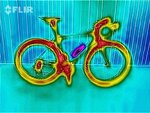 wPDYe4w.jpg102.1 KB · Views: 1,006
wPDYe4w.jpg102.1 KB · Views: 1,006 -
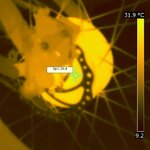 IR_0046yellow.jpg51.3 KB · Views: 1,036
IR_0046yellow.jpg51.3 KB · Views: 1,036 -
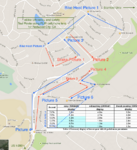 Example eBike Energy Efficiency Test Route %0ARedwood City CA.png622.1 KB · Views: 1,421
Example eBike Energy Efficiency Test Route %0ARedwood City CA.png622.1 KB · Views: 1,421 -
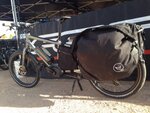 photo-5-300x225.jpg26.3 KB · Views: 815
photo-5-300x225.jpg26.3 KB · Views: 815 -
 felt outfitter fat electric bike.JPG164.7 KB · Views: 1,869
felt outfitter fat electric bike.JPG164.7 KB · Views: 1,869 -
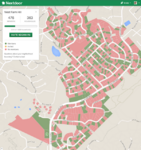 NextDoor.png517.3 KB · Views: 1,021
NextDoor.png517.3 KB · Views: 1,021 -
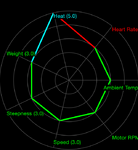 ThermalRating.png92.4 KB · Views: 2,275
ThermalRating.png92.4 KB · Views: 2,275
Last edited:

